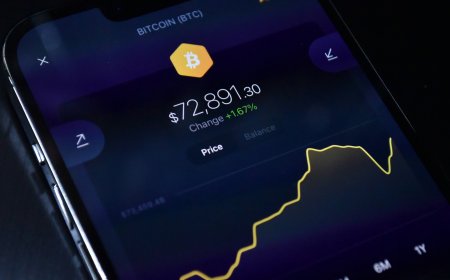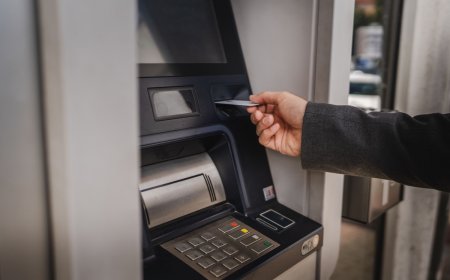BriansClub and the Rise of Digital Carding Markets: Anatomy of a Cybercrime Empire
Explore how BriansClub became a dominant force in stolen card data trading. Learn about its structure, takedown, and legacy. Visit https://briannclub.to for more insights.

BriansClub and the Rise of Digital Carding Markets: Anatomy of a Cybercrime Empire
In the ever-evolving world of cybercrime, certain names become legends — not just for their illicit success but for the way they shape the underground economy. BriansClub, or Brians Club, is one such name. It wasn’t just a dark web platform — it was a blueprint for cybercriminal innovation.
Through a robust infrastructure, a massive database of stolen card details, and a professional user interface, BriansClub rewrote the rules of carding. It showed how cybercrime could be scaled globally, with operations running like a legitimate tech startup — only in the shadows.
In this comprehensive look, we’ll dissect how BriansClub operated, how it influenced the cybercrime ecosystem, how it was exposed, and how platforms like https://briannclub.to continue its legacy to this day.
Understanding Carding and the Dark Web
Before we dive into the anatomy of BriansClub, it’s important to understand carding — the practice of using stolen credit or debit card information for fraudulent transactions.
Carding is one of the most profitable cybercrimes, costing financial institutions and individuals billions of dollars annually. The stolen data — often obtained through malware, data breaches, or skimmers — ends up on dark web markets, where it is sold to criminals who commit fraud ranging from online purchases to ATM withdrawals.
BriansClub was one of the largest and most sophisticated platforms facilitating this trade.
The Rise of BriansClub
BriansClub launched around 2015, rapidly growing to dominate the carding ecosystem. Its founder(s) remain anonymous, though they are widely believed to be linked to Russian-speaking cybercriminal groups.
The name was likely chosen as a provocation against renowned cybersecurity journalist Brian Krebs, known for exposing such underground operations.
By 2019, BriansClub had become the largest dark web marketplace for stolen card data, amassing millions of user accounts and hundreds of millions in sales.
How BriansClub Worked
1. Card Data Sourcing
The core of BriansClub’s inventory came from data breaches, POS malware infections, ATM skimming devices, phishing campaigns, and compromised merchant networks.
Card data types sold included:
-
Track 1/2 dumps (for cloning magnetic stripe cards)
-
CVV fullz (used for online fraud)
2. Vendor Contributions
Criminal vendors uploaded card batches to the platform. These vendors were typically hackers or syndicates who had stolen the data.
3. Marketplace Interface
The user-friendly interface allowed buyers to:
-
Search for cards by country, bank, BIN, type, and balance
-
Sort results by freshness or price
-
Purchase directly using cryptocurrencies
4. Crypto Transactions
Buyers funded an internal wallet using Bitcoin or Monero, ensuring anonymity.
5. Refunds and Ratings
Buyers who received “dead” cards could request replacements. Vendor ratings and feedback encouraged quality assurance — an uncommon feature in criminal networks.
The Sheer Scale of Operations
By the time BriansClub was compromised in 2019, the leaked data revealed just how enormous the platform had become:
-
Over 26 million stolen credit and debit card records
-
More than $566 million in transactions
-
Card data from across the globe
-
Regular monthly uploads of new dumps
This wasn’t a small hacker operation — it was a full-blown criminal enterprise with real infrastructure and processes.
The 2019 Leak: BriansClub Exposed
In a stunning development, someone — potentially a rival hacker or insider — leaked BriansClub’s entire backend database to journalist Brian Krebs.
The leak included:
-
Card records
-
Internal user logs
-
Wallet balances
-
Admin activity
Krebs passed this information on to banks and financial institutions, enabling them to cancel millions of cards before they were used fraudulently.
Key Impacts:
-
Card fraud declined temporarily
-
Trust in BriansClub shattered
-
Buyers and vendors fled
-
BriansClub’s operations effectively shut down
It was a rare victory in cybercrime defense — accomplished without a single arrest.
Is BriansClub Still Around?
While the original BriansClub site was taken down, multiple platforms have since appeared using the same name, design, or branding. One prominent example is https://briannclub.to, which appears to mirror the structure of the original site.
Whether it's operated by the same people or imitators is unknown. However, the branding of "BriansClub" continues to command attention and traffic in cybercriminal communities.
⚠️ Disclaimer: This article is for educational purposes only. Accessing or using illegal marketplaces is against the law.
Why BriansClub Succeeded Where Others Failed
BriansClub stood out in an ecosystem littered with scams, shutdowns, and FBI stings. Here’s why:
1. Professional Design
It had a responsive, functional UI — similar to modern e-commerce platforms.
2. Vendor Management
By vetting vendors and allowing customer feedback, it maintained high card validity rates.
3. Customer Support
Refunds for non-functional cards created loyalty and retention.
4. Volume and Freshness
The database was frequently updated with new dumps, ensuring a steady flow of buyers.
The Role of Cryptocurrency
BriansClub was part of the wave of cybercrime that leaned heavily into cryptocurrency. Crypto made the marketplace viable by offering:
-
Anonymity in payments
-
Cross-border transactions
-
Harder-to-trace funds
Users typically bought Bitcoin through P2P exchanges or crypto ATMs and deposited it directly into their BriansClub wallets.
However, blockchain analytics tools have since become more sophisticated, and law enforcement now traces crypto movements more effectively.
The Global Fallout
After the 2019 leak, financial institutions around the world scrambled to:
-
Cancel affected cards
-
Monitor fraudulent activity
-
Improve breach response protocols
Cybersecurity companies studied the leak to better understand:
-
Criminal workflows
-
Common attack vectors
-
Vendor behavior
In many ways, the BriansClub exposure served as a wake-up call for the financial world.
How Can Individuals Protect Themselves?
Even if you’ve never visited the dark web, your information may still be at risk due to third-party data breaches. Here’s what you can do:
-
Enable fraud alerts on all credit and bank accounts
-
Use two-factor authentication wherever possible
-
Check your bank statements weekly
-
Avoid entering card info on untrusted sites
-
Use virtual cards or masked cards for online purchases
And remember: credit cards are safer than debit cards for fraud protection.
What’s Next for Dark Web Markets?
BriansClub might have been taken down, but the template it created lives on. New marketplaces now operate in more secure, decentralized ways. Innovations include:
-
Use of private Telegram or Discord groups
-
Integration of Monero for added privacy
-
AI-driven support bots
-
Invite-only access
The dark web isn’t getting smaller — it’s getting smarter.
Final Thoughts
BriansClub was a pioneering force in cybercrime. It brought professionalism, scalability, and structure to the carding ecosystem — and in doing so, it changed the game.
Its takedown was equally unprecedented, offering banks and cybersecurity professionals an inside look at the scale of carding operations. Though platforms like https://briannclub.to continue in its shadow, the lessons from BriansClub still shape cybersecurity responses today.
Understanding BriansClub isn’t about glorifying criminals — it’s about learning how crime evolves so we can fight back smarter, faster, and more effectively.











































